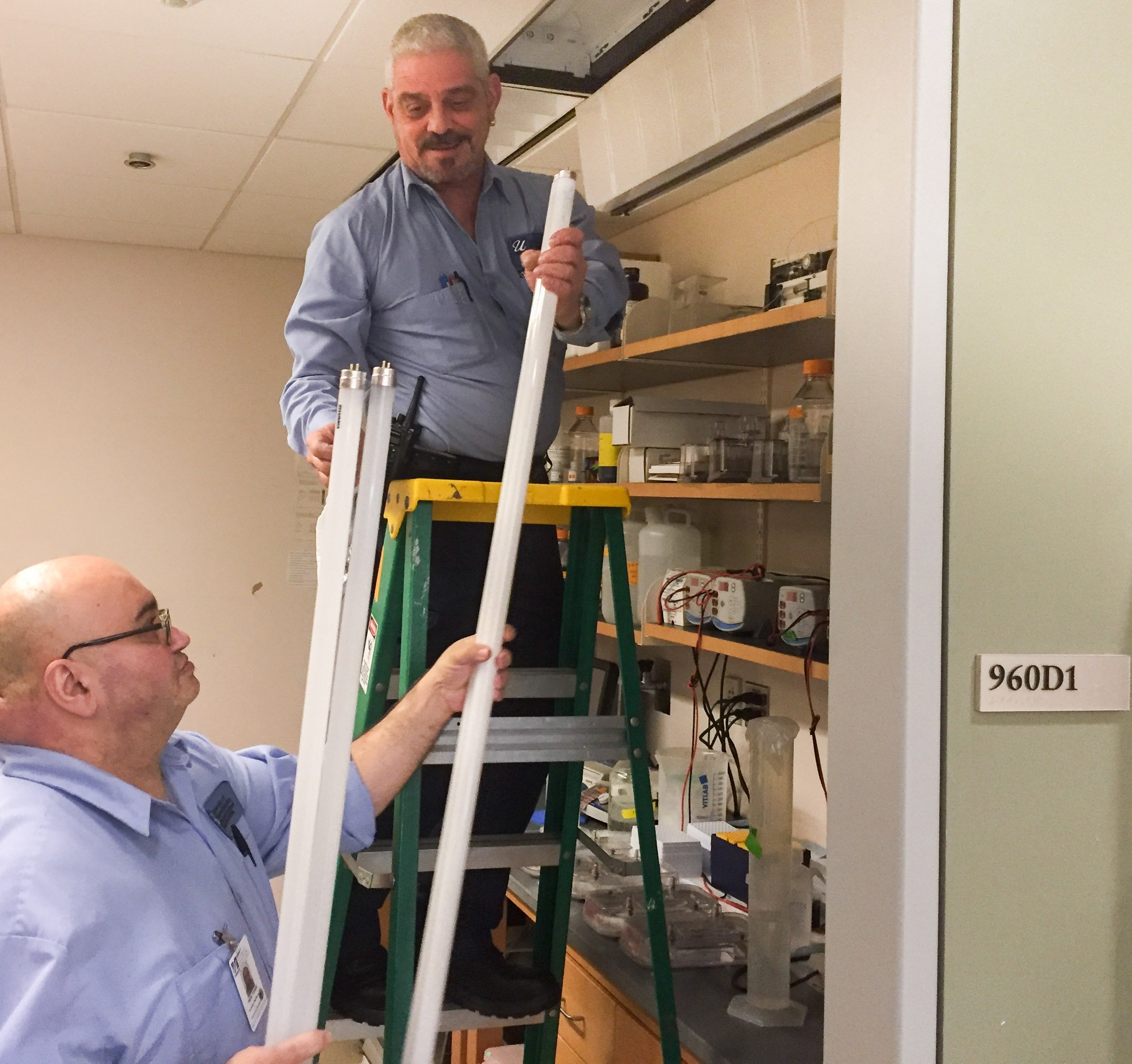UMass Chan Medical School School Rises to Silver for Sustainability
 UMass Chan Medical School took a step up on the green medal platform in 2020, earning Silver from the Sustainability Tracking, Assessment & Rating System (STARS), a program run by the Association for the Advancement of Sustainability in Higher Education.
UMass Chan Medical School took a step up on the green medal platform in 2020, earning Silver from the Sustainability Tracking, Assessment & Rating System (STARS), a program run by the Association for the Advancement of Sustainability in Higher Education.
STARS is a rigorous self-reporting framework for colleges and universities to measure their sustainability. STARS now has more than 900 participants in 40 countries, making it the global standard for higher education sustainability metrics.
“Getting to silver is a big jump, thanks to a lot of work by many groups on the Worcester campus over the past three years,” said Suzanne Wood, associate director for sustainability and campus services in the medical school’s facilities management department.
The medical school went through the STARS assessment process in 2016 and earned a Bronze rating, with a total of 28.17 points across a range of specific categories. In April of 2020, after compiling three years of data and documenting numerous sustainability initiatives, Wood’s office filed a report that earned 46.18 total points, elevating the campus to Silver status.
“STARS was developed by the campus sustainability community to provide high standards for recognizing campus sustainability efforts,” AASHE Executive Director Meghan Fay Zahniser said it a prepared statement. “UMass Chan Medical School has demonstrated a substantial commitment to sustainability by achieving a STARS Silver rating and is to be congratulated for their efforts.”
The medical school’s rise to Silver status was attributed largely to better performance in energy usage, water consumption, greenhouse gas emissions, and more sustainable purchasing practices.
The school’s purchasing score jumped 33 percent because of the implementation of a paperless system for all contracting, a focus on sustainable materials and a decrease in solvent-based janitorial supplies.
Numerous plumbing retrofitting projects in older buildings on campus helped to reduce the annual usage of potable water by 23 million gallons from the baseline reference year. That boosted the school’s STARS water score by 29 percentage points.
On the energy front, the school’s STARS score jumped 20 percentage points because, even though the campus has grown, energy use per-square-foot of building space has dropped 29.64 percent from the baseline reference year.

Electrical consumption was reduced through several LED lighting upgrade projects, including in the parking garages, the Lazare Research Building, the central power plant and all newly renovated spaces. LED fixtures consume 40 to 60 percent less energy than legacy fluorescent or incandescent lighting.
UMass Chan saved on heating and cooling needs by retro-commissioning several buildings, including the Albert Sherman Center, Ambulatory Care Center and the Lazare Research Building, to bring HVAC systems to optimal working order. The facilities team now also uses advanced diagnostic software to identify HVAC system faults that can arise and impact energy consumption.
In all newly built or renovated areas on campus, the building-automation system adjusts temperature and ventilation settings prior to the start of the work day and at the conclusion to minimize heating or cooling needs during off-hours. There is an increased use of “occupied” and “unoccupied” temperature set-points to reduce energy usage when an office or conference room is not in use.
Reduced demand for energy, and improvements at the central power plant, helped trim campus greenhouse gas emissions by 19 percent over the reference year.
“The one major area that we did not do as well as we wanted was recycling and waste diversion,” Wood said. “Recycling remains a challenge for a number of reasons and we will try to improve.”
Lazare Research Building, the central power plant and all newly renovated spaces. LED fixtures consume 40 to 60 percent less energy than legacy fluorescent or incandescent lighting.
UMass Chan saved on heating and cooling needs by retro-commissioning several buildings including the Albert Sherman Center, Ambulatory Care Center and the Lazare Research Building, to get their HVAC systems back to optimal working order. The facilities team now also uses advanced diagnostic software to identify HVAC system faults that can arise and impact energy consumption.
Furthermore, in all the newly built or renovated areas on campus, the building-automation system adjusts temperature and ventilation settings prior to the start of the workday as well as at the conclusion of the work day, to minimize heating or cooling needs during off-hours. There is an increased use of "occupied" and “unoccupied” temperature set-points, to reduce energy usage when an office or conference room is not in use.
Reduced demand for energy, and improvements at the central power plant, helped trim campus greenhouse gas emissions by 19 percent over the reference year.
“The one major area that we did not do as well as we wanted to was recycling and waste diversion,” Wood said. “Recycling remains a challenge, for any number of reasons, and we will try to improve.”
Photo: Fred Yanni, left, and Edwin Baez install new LED bulbs in the LRB